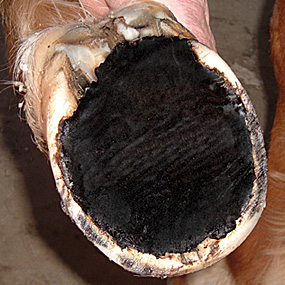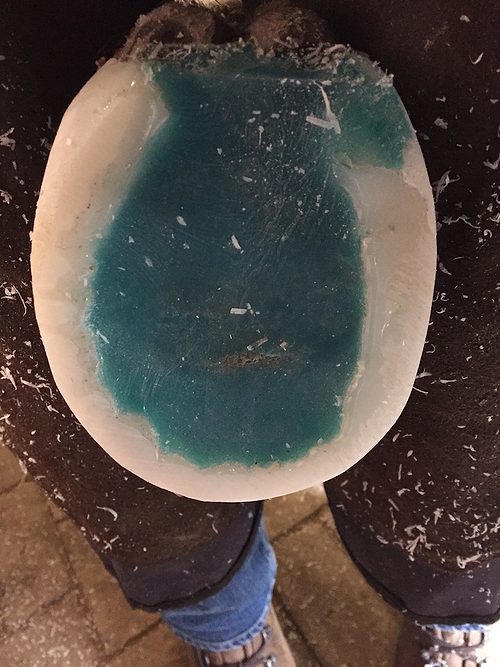The long debate of shod vs. barefoot has yet to rein in for horse owners and hoof care professionals alike. However, proponents of either side can agree that the transition from shod to barefoot requires extra steps and precaution.
Similar to how humans develop calluses after walking or running barefoot for long periods of time, horses also need to develop and build-up their hoof wall after shoe removal. When switching from shod to barefoot, it’s important for horse owners and hoof care professionals to account for a transition period in their horses’ hoof care regimens before jumping back into regular trimming cycles.
Best Practices for the Transition Phase
Regardless of why horse owners switch their horses from shod to barefoot, it’s crucial that with any change, they keep their horses happy and healthy. To accomplish this, horse owners and hoof care professionals should consider these practices to help their horses remain comfortable when they make the switch:
- Allow the foot to grow – When a farrier pulls a horseshoe off a foot, it is essential to remove as little of the hoof wall as possible. Light trimming allows the hoof wall to toughen and the sole to increase in depth to compensate for the lack of shoes. After the removal process, hoof care professionals should minimize the use of tools, such as hoof picks, shoe pullers, rasps and nippers, as the healing process lasts anywhere from 5-6 weeks. Once the healing period concludes, farriers should only perform light knife work to remove sharp and frayed edges from a horse’s hooves until the third trimming cycle.
- Trim less foot – When a hoof care professional exercises regular trimming cycles, a horse’s muscle memory follows a consistent pattern as every foot experiences similar trimming patterns. However, after pulling the shoes from a horse, the sole and length of the hoof wall require different trimming techniques. Less trimming supplements a thicker sole and enough hoof wall to suspend the coffin bone off the ground, which in turn protects a barefoot horse from discomfort. If a horse’s sole is too thin, the coffin bone presses down towards the ground and can be painful.
How to Protect Barefoot Hooves
Similar to protecting the nailbed of a human, the internal hoof cavity requires further protection during the healing process of a newly barefoot horse. Pour-in pad materials, like Sole-Guard, help to increase sole depth and provide extra support as a horse makes the transition from shod to barefoot. Vettec’s Sole-Guard is easy to apply, durable and commonly used as a protective layer. Sole-Guard is a fast-setting, liquid urethane pour-in pad material providing strong support that retains its shape and flexibility indefinitely. It is designed to use without shoes and adheres to the sole sealing out moisture and debris, protecting both the frog and the sole.

Talk with your farrier or veterinarian about how you can make your horse comfortable when you transition from shod to barefoot, and how pour-in pad materials can be a helpful tool and provide them with extra support.









Post a comment
Report Abusive Comment